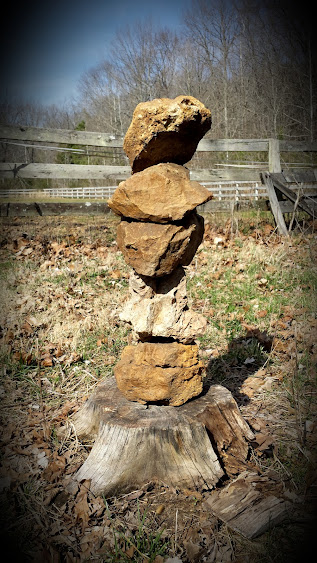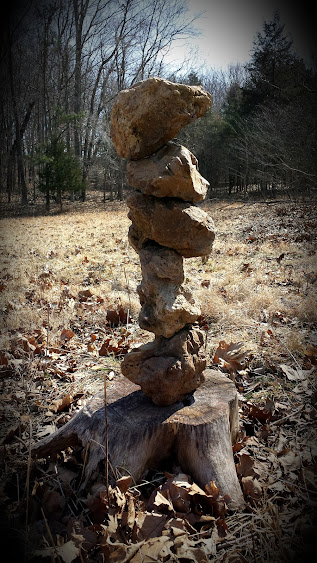
Although I come from the West, and left a bit of my soul there to guide me home, I grew up in the old, worn down mountains of the Missouri Ozarks. It is a land that is very changeable. A land that like Crowded House sang about, can often have four seasons in one day. It is now December, and although last week we saw temperatures in the 20s, yesterday was almost 70 degrees. It will do this back and forth well unto January, when winter will finally decide to settle in for a month or so.
The weather here has never fit the model of the seasons that I was taught in school as a child—each season having its 3 months at the prescribed regularly occurring times. Winter from December to February; Spring from March to May; Summer from June to August; Autumn from September to November. No, our temperatures rise and fall on the thermometer with a mercurial playfulness that makes gardening, planning picnics, and even dressing a daily guessing game.
There is one thing that can be counted on like clockwork, however, and that is the wind. I am an air sign, not that I believe in that kind of thing. Mostly. Even so, I have always had an affinity for all things air and a natural inclination for observing the moods of the wind. One such observance is that which I call ‘Transitional Winds’, that is, the winds that blow the out the old and blow in the new. This is something that I have experienced since I was a child. They occur at specific times of year when the seasons are changing, and while it sounds a little woo-woo, it is a very real, observable, tangible phenomenon. The wind becomes different. It used to bother me, make me restless and unsettled. That’s how I knew when they were coming—I’d get all jumpy in my solar plexus, and the hair would raise on the back of my neck. I had a lot of cultural superstition and a mighty religious lens to work around back then. The lens was not my own, but nonetheless made it hard to make peace with what spoke to me. Things are much different now.
It also happens that as these Transitional Winds keep the wheel of the seasonal cycle shifting, they also typically coincide with major shifts in my life. Maybe it’s coincidence. Maybe it’s my brain seeking patterns where there are none. Or maybe it is as I see it. Either way, it is how I live it. And this year’s autumnal Traditional Winds were no exception. The thing about Transitional Winds is that you can either fight them and get blown to shit, or you can allow them to bring needed change in your life and use the time to examine and reevaluate what gets stirred up. The only way to grow is to change. All things are impermanent. Transitional Winds remind us to shake up the spirit, to blow the cobwebs off the soul, turn things upside down, and get to work.

The most major change recently is that following my daughter’s decision to leave homeschooling so that she might attend a new charter Arts Academy, my son, out of the blue, decided in mid-October to do the same. My kids are artsy, and they wanted both a new experience and to have the opportunities that a school with daily multi-discipline arts instruction could provide. So, I went from living a decade of unschooling and progressive, child-led learning philosophy and education to having kids in public school (gasp!) and me looking for a day job in the span of one week. Whoa. And though I struggled with it for a good minute, seeing both of my kids doing well in said school, despite my continued disillusionment and disagreement with the American Educational System, has been very reassuring and rewarding. Realizing that I am now free to pursue interests that I’d put on hold is also ridiculously exciting in a quiet, can’t-quite-say-it-all-out-loud kind of way. As wonderful as homeschooling was, it was a tremendous responsibility—one that I must admit to bearing with difficulty at times. Like every worthwhile thing in life, it was not always cuddly puppies and sparkly rainbows. I had to learn my unschooling mantra very quickly: Observe, Reflect, Adjust. It was a challenge to give two completely different kids with two completely different learning styles everything that they needed each day. I did my best. My degree and certification in Elementary Education was, contrary to what most people thought, often more of a hindrance than a help. I had a lot to unlearn and relearn properly, you see. Homeschooling was, however, a fantastic journey and one I’d do again in a heartbeat. I think the Chickpeas would, too.

It seems that I am looking down the barrel of finding a new job, potentially a new career, and I’m totally stoked. I’d feel conflicted about it, but the Chickpeas are happy with their choice, and that, it seems, was the key to my new-found liberation. It is an amazing double truth of motherhood—from the moment your first child quickens in your womb, one full part of your brain is always on them, dedicated to their health, safety, and well-being; and when your children are happy, you can be happy, too. Knowing that they are where they want to be—even if it was not where I imagined in a million years they would be—feels really good. Not being solely responsible for their educations feels good, too. I feel lighter than I have in years. Happy to just be Mom.

So what is next? Well, for a decade I’ve said that I would never go back to teaching. And I meant it. I have no desire to teach in a regular school setting, because we’ve got two very different philosophies of education, how children learn, and what is in their best interest. Trying to fit in that system would require lying to myself and everyone else in ways that I do not find acceptable—which is to say, at all. But I do love teaching. Rather, I love helping to facilitate and guide learning. There’s a difference. I don’t want to waste a perfectly good degree—one that can give me a steady job (that is NOT waiting tables), a meaningful career, be a positive influence on the lives of children, and someday help us to retire. So I started thinking about under what circumstances I would feel good about returning to the profession of teaching, and immediately I thought of the different types of “alternative”, progressive models of schools out there: Reggio Emilia, Sudbury, free skool, and Montessori to name a few. I had studied, albeit briefly, a few of these different philosophies and methods when I was at University, but soon found that while my degree required that I know they exist, it did not require that I learn how to pursue working within those models. In practice, it was actually discouraged, which is sad because I felt a real spark for these models even as a green teacher-in-training. Now I have been revisiting these models with a different kind of experience under my belt, and I have a steadily growing realization that this is the direction I need to take. As it turns out, my decade as an unschooler (which is its own story) probably taught me more about education, how children really learn, and the true role of a teacher than I ever learned in my degree program. As I am relearning the tenets of these models, I’m realizing that I pretty much unknowingly gave my kids a Reggio Emilia and Montessori inspired education for the last ten years. That makes me smile.
There aren’t very many “progressive” schools where I live here in the good ole Heartland, but that is sloooooowly changing. I was very happy to find that there are several Montessori training centers right here. I’m not only looking into adding a Montessori certification to my credentials, but I’ve been interviewing with a couple schools for assistant positions (all Montessori teachers have to start out as assistants). I’m really excited about the potential for working within a school environment that is harmonious with my beliefs about education and child development. Keep your fingers crossed. Good things are happening. Now I have the challenge of being patient, waiting for others’ decisions and seeing what opportunities pan out.
On other fronts, I’ve been spending a lot of time considering my new passion for natural dyeing and how to better integrate it with other aspects of my life that are similar—native gardening, sustainability, simplicity… I find myself wanting to more fully settle into these practices and flesh them out not only individually, but also to suss out how they can work together. I’ve recently been inspired by the projects of others who are working to be more sustainable in their use of fiber and textiles—right down to the clothes they wear and what they’ll use for crafting. I’ve got a lot incubating in my head about that. I’ve also been following my usually dip into wintertime introspection and examining how I am living out my beliefs in my daily life. There’s been more sussing out on a spiritual level about the connection between soulwork, physicality, and how one can be an atheist and a pagan-daoist-stoic all at the same time. I finally made peace with the fact that I’ve known for decades what my path is, I just had to accept that it doesn’t have words, titles, labels, or names. It is not tidy, but it is real, and my goal now is to find a voice for what I do, so that it can be outside my head, too. Talking about things like ‘Transitional Winds’ is a start. I’m thinking ahead to what the New Year is going to bring with an optimism that I haven’t felt in a while. I feel firmly in my skin and happy to encounter new adventures.
Here’s to Transitional Winds and the lessons they bring.
Posted in
spirits & red thread and tagged
alternative education,
atheism,
changes,
child development,
children,
cycles,
daoism,
earthy practice,
education,
happiness,
hedge,
homeschooling,
jobs,
Montessori,
motherhood,
nature,
observance,
parenting,
Reggio Emilia,
seasons,
souls,
spirituality,
stoicism,
transitional winds,
unschooling

































































